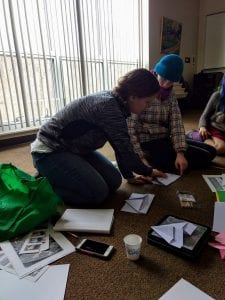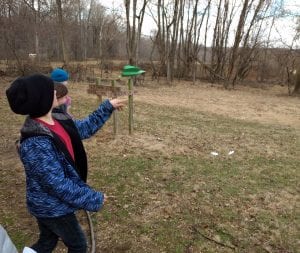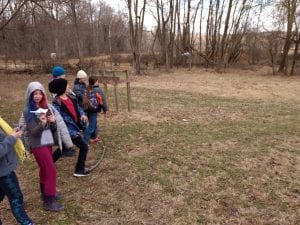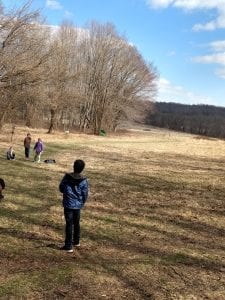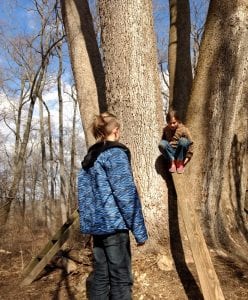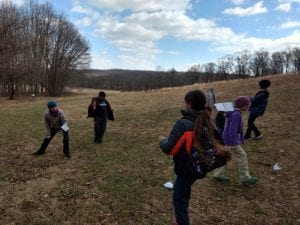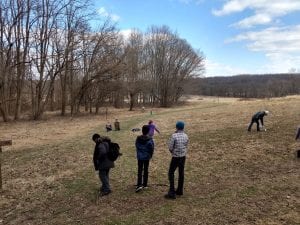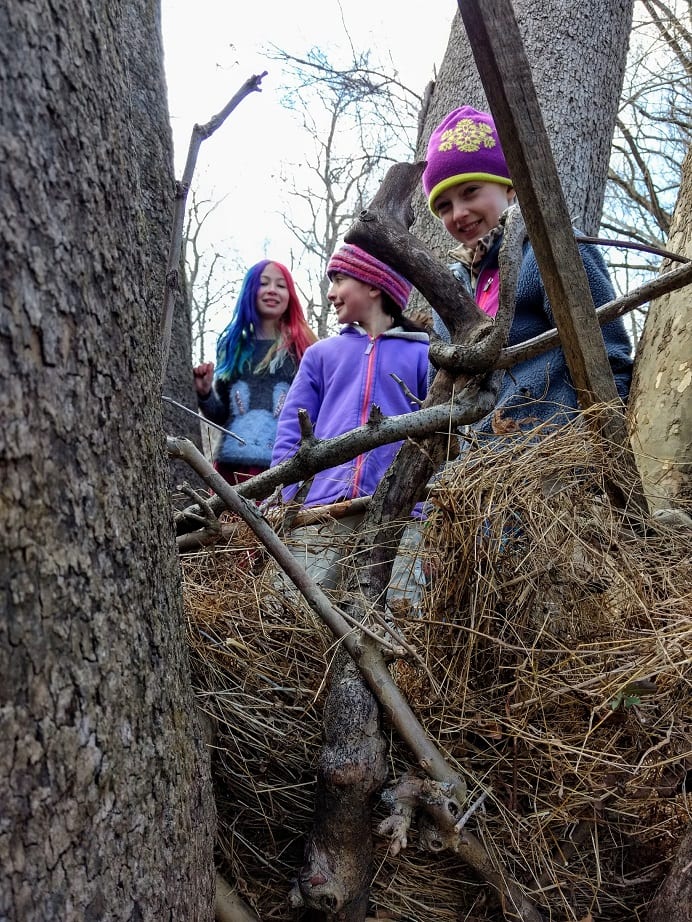3/13/2018
Birds were the talk of the day as we learned more about how technology has been influenced by birds, what we can learn from studying birds, and how to be inspired by birds in the form of art. We started by asking the question, why do we study birds? What’s the purpose? A lot of people like to watch birds, they’re pretty, they’re an animal we can see quite often in nature, but what else makes them important? Birds fill specific niches in the environment. We defined the word niche (having a specific place or role they fill) and then thought more about how they fill those niches. Jasper put it well, birds are both predators and prey. Take a robin for example, a bird a lot of people are very familiar with. What do robins eat? It depends on the time of the year. In Spring and Summer they are eating a plethora of bugs and other invertebrates, like worms, but in Fall and Winter they feast on berries and seeds. When a robin eats worms and insects, that makes them a predator but they are still a prey animal too, easily being caught by larger birds of prey like hawks and falcons or even mammals.
Birds also have some amazing adaptations, flight being the first one that comes to mind. They are the only animals with feathers and they have hollow bones that keep them light. They have specially adapted feet/talons and beaks that help them eat. What are some ways we can identify birds? We looked at few field guides and examples of taxidermy. Looking at various species (we used a female mallard (pictured above), a male scarlet tanager, a young broadwinged hawk and a mockingbird (pictured above)) to see what stood about the most about each one. For the female mallard, James noticed the blue/purple feather patch on its side. For the mockingbird we talked about it’s long tail and white spots on the wings that you can see when it’s flying. The scarlet tanager is bright red with black wings and the hawk can be more challenging, looking like other young hawks. These distinguishing features are called Field Marks. People observing birds often use these stand out marks to identify a bird quickly. Another great way to learn more about birds is to draw them. After we had a chance to look at the taxidermy (some of us had already started sketching) we did a quick drawing lesson, a step by step how to draw birds. This step by step method is used by John Muir Laws and you can find his sketching and nature journaling resources at the following link (this is his blog posts on how to draw birds but you can find more resources on his website. He also has a great youtube channel!). I have also used this technique a lot myself (having learning it from him during many of his classes).
https://johnmuirlaws.com/category/art-and-drawing/drawing-birds-art-and-drawing/
How does all this relate to biomimicry? Well, birds are one of the biggest inspirations for flight and speed. We passed around a few examples, such as the kingfisher and the Japanese bullet trains, hawks and jets and peregrine falcons and studying speed with their flight patterns. And what better way to emulate birds than by building paper airplanes of various designs and testing them out! We had three different designs for our paper airplanes, a simple glider, an origami plane built for speed and a broad-winged airplane. We also had one sample of a round, tube like paper airplane (that Solace is holding below).
In the classroom we built various paper airplanes, decorated them and named them. After our planes were constructed it was time to head outside. We hiked to the Ed Hut and had a quick snack and then it was time to test our paper airplanes. We set up a stick line that was the line we were to stand behind and then we went through various launches. The kids decided a small piece of wood would mark the plane that flew the furthest. We also counted out steps (heel to toe) to see how far our planes went. My shoe is about 11 inches long, so even my adult foot didn’t quite make 12 inches but we will approximate our distance in inches by using our steps. It turns out that the record was 52 Eva steps and 46 James steps, since his feet are larger. This is about 30 feet. That is really a great distance! We also adjust our paper airplanes by changing the folds on the wings and using two different sized paper clips to distribute the weight to see what happened. It’s amazing how such a small object like a paper clip or a simple fold can change the distance and flight of a paper airplane.
Also while outside we started a bird list! We stopped and looked and listened to birds a few times along the way and here is our list so far.
Bird List:
Northern cardinal, Carolina chickadee, white-breasted nuthatch, downy woodpecker, tufted titmouse, eastern bluebird, red-bellied woodpecker.
Those are some great species to start with, we’ll see what we can add next week! After we were done testing our paper airplanes we hiked across the meadow, over the bridge and down the trail to the climbing tree. It was a favorite spot last semester so naturally we had to go back! Plus, this time around, all the kids decided to start making it more homey. Everyone started gathering sticks and dried grass, weaving the sticks to make a wall and stuffing the grass in and laying it down on the ground for a comfortable place to sit. After a short time it started to look like a huge bird nest! We plan to go back the following week to continue construction on the human bird nest!


